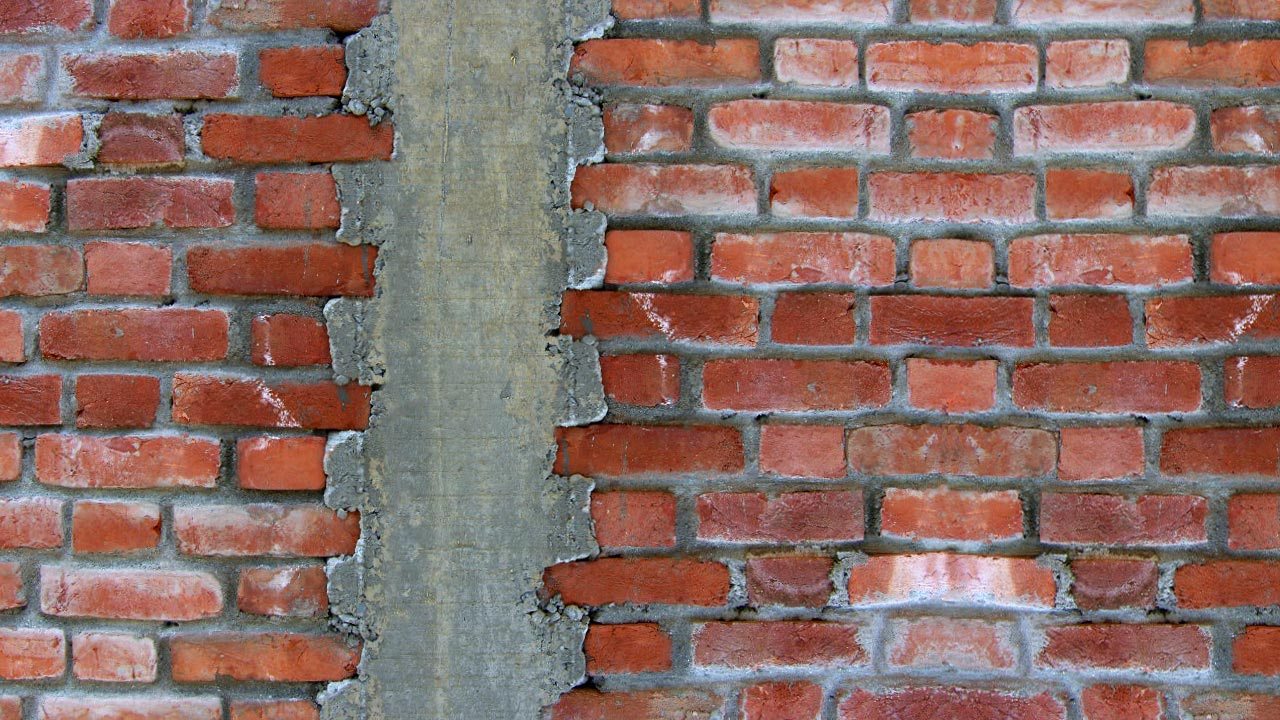Open for students and professionals of Structural Engineering and Earthquake Engineering. Send us an email to request the full assignment sheet via this link.
Past and current research:
2016 – 2017: Amber Tan, Nanyang Technological University in Singapore
Confined masonry has historically proven to behave well in earthquakes. The basics of confined masonry are not too difficult and the wall dimensions, thicknesses and openings can be calculated, as well as the required amount of steel reinforcements. This earthquake resistant type of construction is recommendable for multi-storey buildings with concrete slabs, up to 3 floors high.
Although the end result looks similar, confined masonry works significantly different than RCC frames. Firstly there is a difference is the sequence of building; RCC frames are built first and then filled up with bricks. The frames are mostly subjected to moment forces that doesn’t go along with the stiff infill. With confined masonry the walls are built first with a toothed wall end, and the tie columns and beams are cast later, thus creating shear panels. This connection between column and panel seems to be the key to success, and needs further research.
Interestingly, this system is cheaper and less complicated than making a concrete frame earthquake resistant! Confined masonry uses about the same amount of bricks and concrete, but far less steel reinforcement is needed. Also, the connections are a lot easier to explain to the local labourers.
We applied the basics of confined masonry ourselves at our hostel for blind students in Nepal. A description can be found here on our Smart Shelter Foundation website.
The existing knowledge about confined masonry is quite elaborate, especially compared to most low-tech construction types. Therefore we feel that it should be possible to complement the missing information relatively fast.
However, we see that some of the published information is contradicting and confusing. For instance, we need to have more certainty about the need for extra tie beams and columns around openings. Which weaving patterns of the steel reinforcements are the correct ones? Also detailed and practical design information is missing difficult to fins. Such as the right way to make an L-shaped building, and what happens at the gap between two building volumes.
Most important seems the research on the connection between masonry and the confinements. We are interested in using different block sizes and materials as wall infill. What is the maximum possible dimension of a tooth, which tooth pattern is best? Do we need those teeth at all? Maybe it is just a matter of fine tuning, yet there is still a lot to discover!
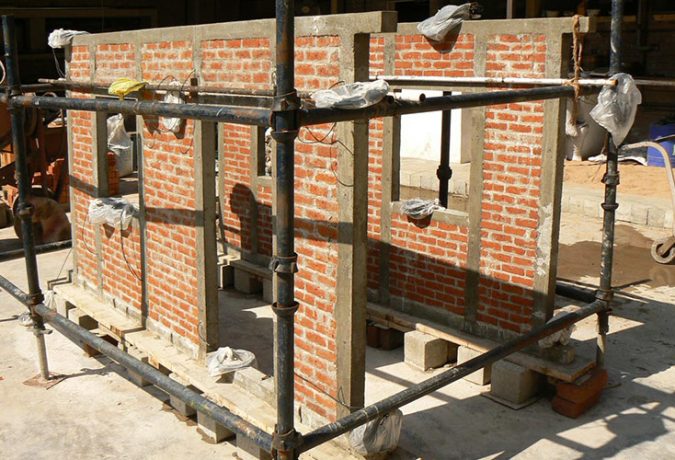 Test panels with extra ties around openings, at IIT Kanpur, India.
Test panels with extra ties around openings, at IIT Kanpur, India.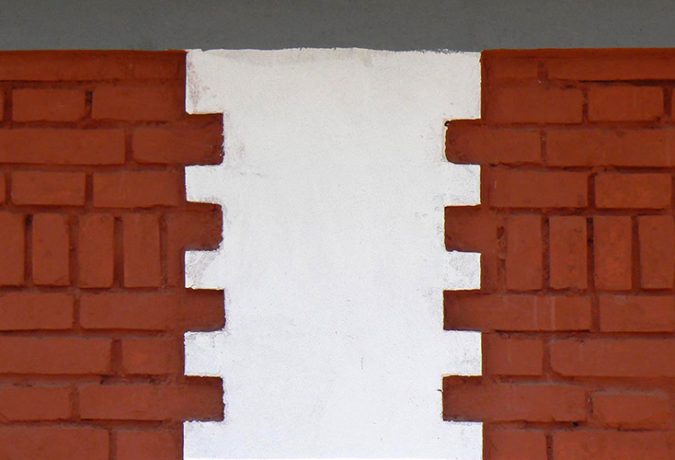 Detail of confined masonry with tooth connection, at hostel for blind students in Nepal, by Smart Shelter Foundation.
Detail of confined masonry with tooth connection, at hostel for blind students in Nepal, by Smart Shelter Foundation.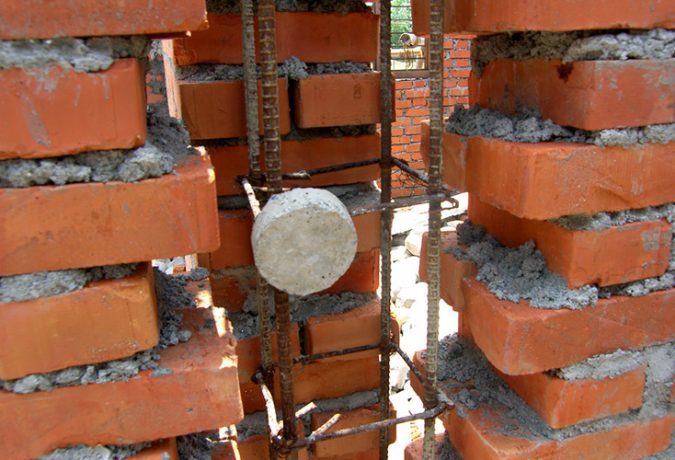 Detail of tooth patterns at a junction of 3 walls, where all teeth are ‘mirrored’.
Detail of tooth patterns at a junction of 3 walls, where all teeth are ‘mirrored’.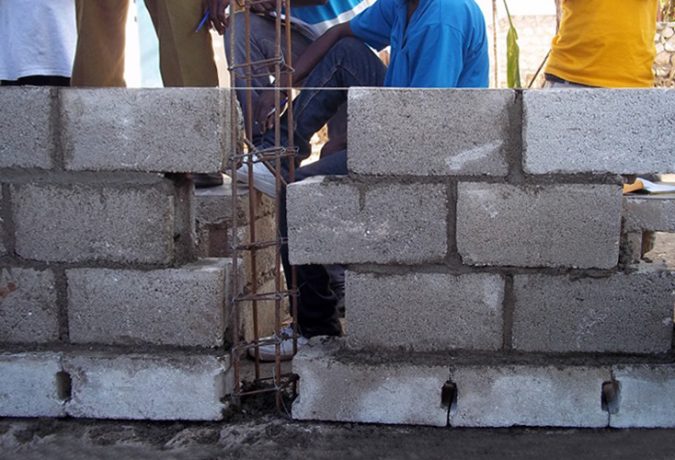 Alternating tooth pattern in cement block wall, at a reconstruction project in Haiti.
Alternating tooth pattern in cement block wall, at a reconstruction project in Haiti.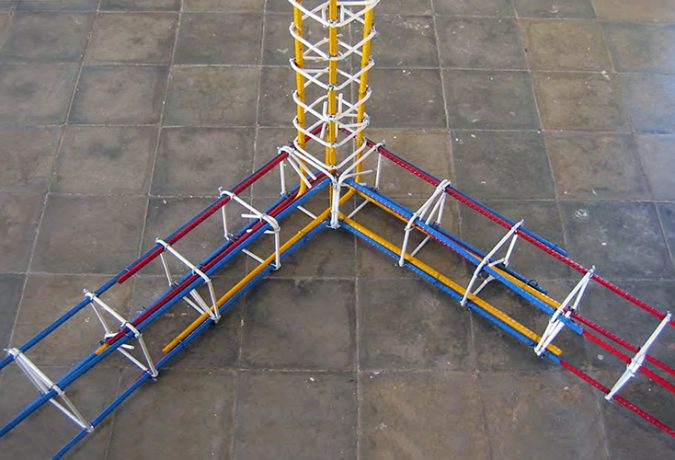 Colour model of the pattern of steel reinforcements in column and beams, made by Build Change.
Colour model of the pattern of steel reinforcements in column and beams, made by Build Change.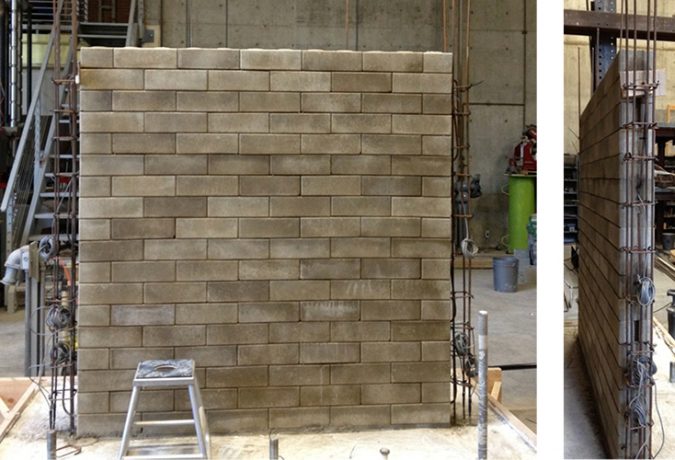 Test panel of confined masonry wall with interlocking earth blocks, at California Polytechnic State University, San Luis Obispo.
Test panel of confined masonry wall with interlocking earth blocks, at California Polytechnic State University, San Luis Obispo.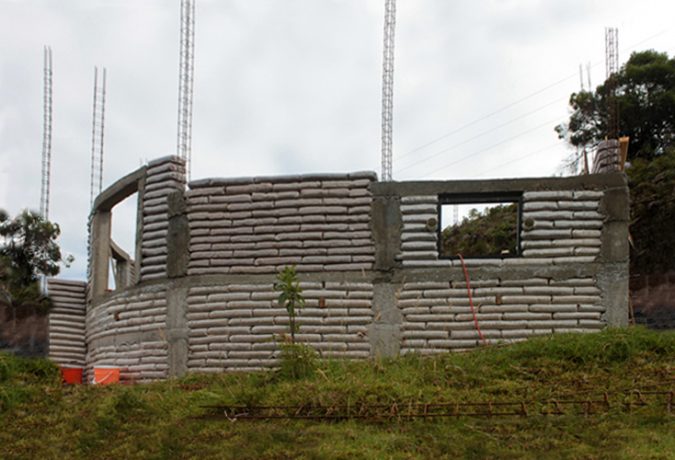 And the designs and techniques must be fully tested for their seismic behavior.
And the designs and techniques must be fully tested for their seismic behavior.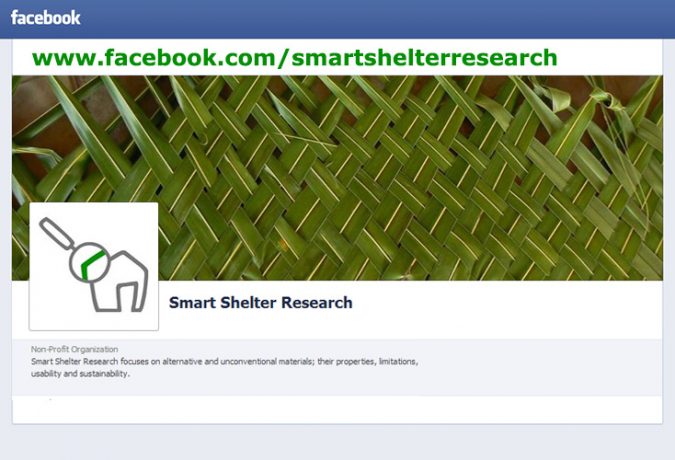 For frequent updates and many more pictures, visit our Facebook page.
For frequent updates and many more pictures, visit our Facebook page.